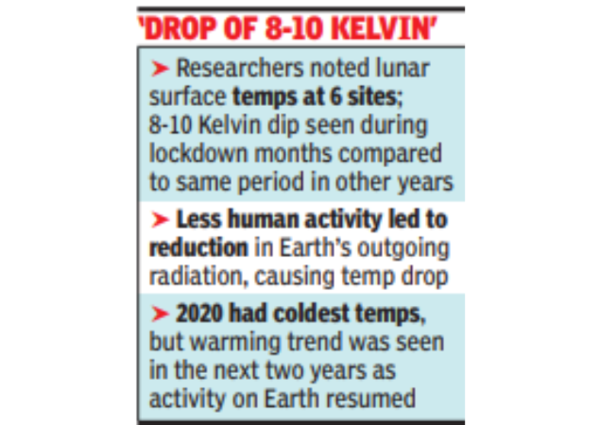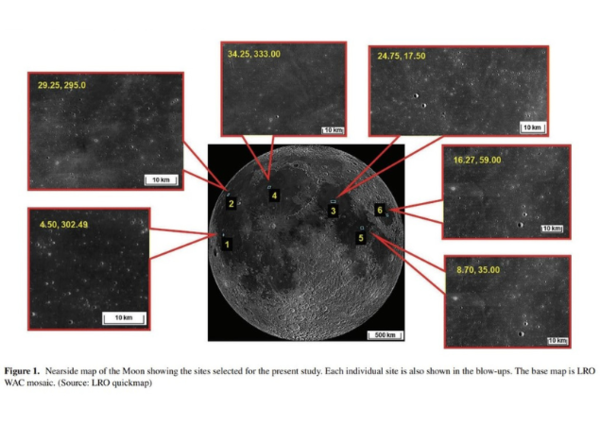

Bengaluru: Indian researchers It finds evidence that global coronavirus lockdowns in 2020 may have had an impact as far away as the moon. A study published in Monthly Notices of the Royal Astronomical Society: Letters, accessed by TOI, revealed that Moon surface temperatures It showed an unusual decline during the strictest lockdown period from April to May 2020.
K Durga Prasad and G Ambili from Physical Research Laboratory (PRL) analyzed the nighttime surface temperatures at six different sites – two Oceanus Procellarum sites, Mare Serenitatis, Mare Imbrium, Mare Tranquillitatis, and Mare Crisium-on near the Moon between 2017 and 2023. PRL Director Anil Bharadwaj said: “This is important work for our group here and it is unique.”

Using data from NASA’s Lunar Reconnaissance Orbiter, the researchers observed a consistent 8-10 Kelvin drop in temperatures on the Moon during the lockdown months compared to the same period in other years.
“We actually analyzed data for 12 years. But we used seven years’ data (2017 to 2023) in our study for standardization – three years before the lockdown year, 2020 and the three years after it,” Prasad told TOI.
Researchers attribute this drop in temperature to a decrease in Earth’s radiation released during lockdowns.
As human activity has declined dramatically, there has been a significant decline in human activity Emissions of greenhouse gases and aerosols, reducing heat trapped and re-emitted from the Earth’s atmosphere.
The researchers observed large differences in temperatures across locations and years. The lowest overall temperature was 96.2 K at Site-2 in 2020, while the highest temperature was 143.8 K at Site-1 in 2022. Overall, 2020 saw the coldest temperatures at most sites, with a noticeable warm trend in 2021. And 2022, when human activity on Earth will resume.

“The Moon acts as an amplifier of Earth’s radiation signature. This unique global event has provided us with a rare opportunity to observe how changes in human activity on Earth can affect our closest celestial neighbor,” Prasad explained.
“With an unusual drop in lunar surface temperatures during the night during Complete lockdown due to coronavirus disease The influence of other potential factors such as solar activity and seasonal flow variation has been observed. “The results show that none of these factors have any effect on the observed signature, supporting our findings that it is solely due to the Covid lockdown.”
While the research presents an interesting relationship, the authors acknowledge that more data is needed to fully prove the relationship between changes in Earth’s radiation and lunar surface temperatures. They point out that future lunar observatories could play a role in studying Earth’s climate and environmental shifts.

“Web maven. Infuriatingly humble beer geek. Bacon fanatic. Typical creator. Music expert.”





More Stories
Scientists confirm that monkeys do not have time to write Shakespeare: ScienceAlert
SpaceX launches 23 Starlink satellites from Florida (video and photos)
A new 3D map reveals strange, glowing filaments surrounding the supernova